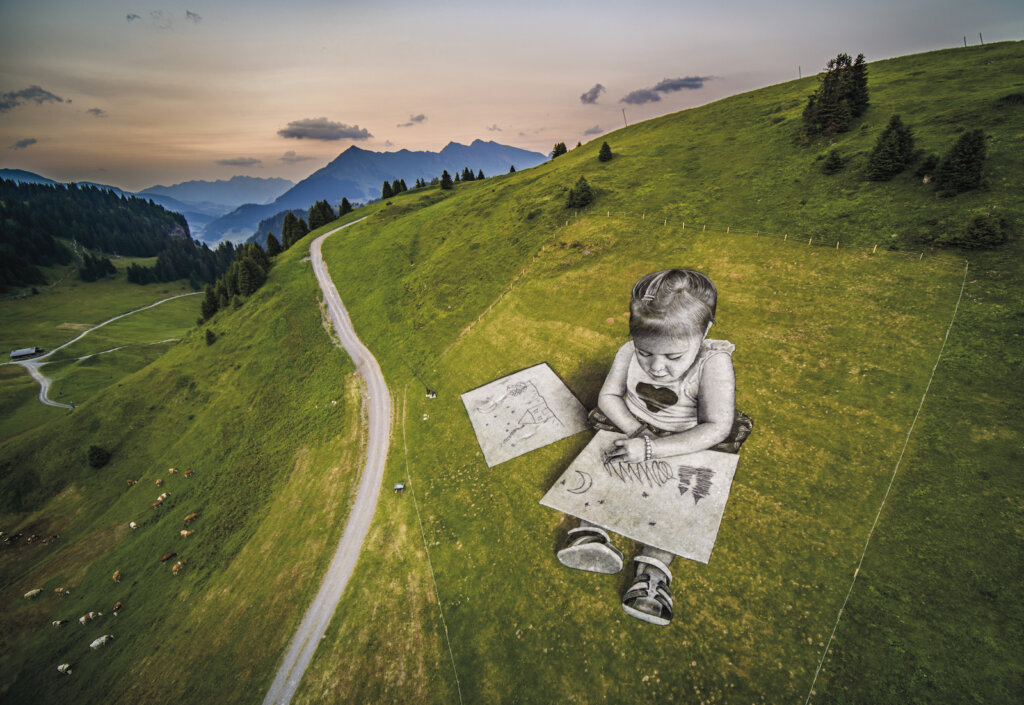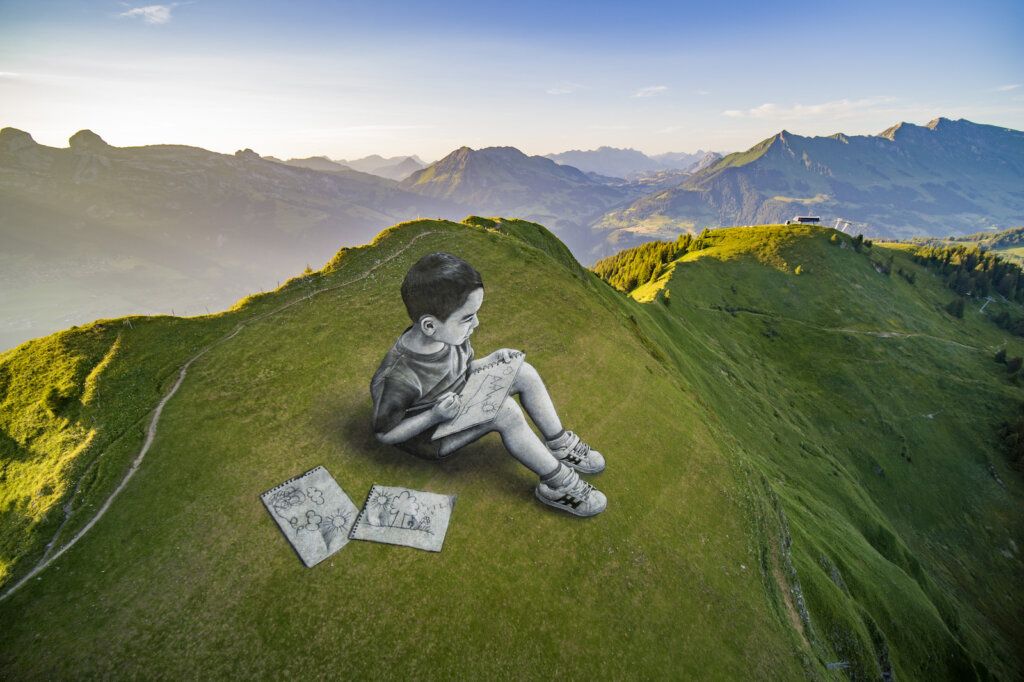When French artist Saype paints the alpine slopes of Villars-sur-Ollon, his works may vanish with the seasons… but do they leave anything behind in the soil?

A Mountain as Canvas
Since 2022, the Swiss resort of Villars-sur-Ollon has become home to an ambitious experiment in land art. Each summer, the Grand Chamossaire slope has been transformed by monumental works from Saype, whose aerially visible paintings marry poetry with ecological consciousness.
- Vers l’équilibre (2022)
- Le soleil a rendez-vous avec la lune (2023)
- L’étoile polaire (2024)
- Vers l’horizon (2025)
Together, they form not only a series of images but a sustained dialogue between artist, landscape, and time. Ephemeral by design, they fade with the weather — a passing gesture on a monumental scale.

The Question of Impact
Saype has built his reputation on the promise that his art, though vast, leaves no scar. His pigments are biodegradable, carefully formulated to dissolve back into the earth. But Villars is unique: unlike a single, isolated site, this slope has been painted four years in succession.
That repetition prompts an inevitable question: can ephemeral art still leave a trace? Might soil health be altered by the recurrence of pigment on the same ground?

Science Meets Art
To explore this, two soil samples were collected, one a control soil sample that was never painted, and a test soil sample that has been painted three times.
Both were entrusted to an independent, certified laboratory. The analysis followed a “funnel approach”: beginning with a wide-spectrum test for more than 150 compounds, then narrowing if anomalies appeared.
The verdict was conclusive, No chemical residues were detected, all measured values aligned with natural levels also found in the control sample, and experts confirmed there was no need for deeper pigment analysis. This was the perfect news for the artist Saype, and it was a confident verdict that his pigments leave no detectable mark, even after repeated application.

A Legacy of the Ephemeral
For Saype, this study validates a core principle of his practice: to create works of monumental presence that nonetheless vanish without harm. His art is about permanence but also about resonance about offering audiences a moment of reflection on humanity’s place in the living world.
Villars-sur-Ollon, with its alpine canvas, becomes more than a picturesque site. It is a testing ground for a new kind of artistic responsibility: one where aesthetics and ethics align, where innovation means not only pushing scale but reducing impact.

Beyond the Horizon
As Vers l’horizon approaches in 2025, Saype’s Villars-sur-Ollon cycle stands as both art and inquiry. It suggests that land art can evolve from a movement once tied to monumental interventions into a practice defined by care, research, and respect.

His mountain paintings may vanish with the seasons, but the questions they raise — about balance, legacy, and the possibility of leaving no trace — remain.